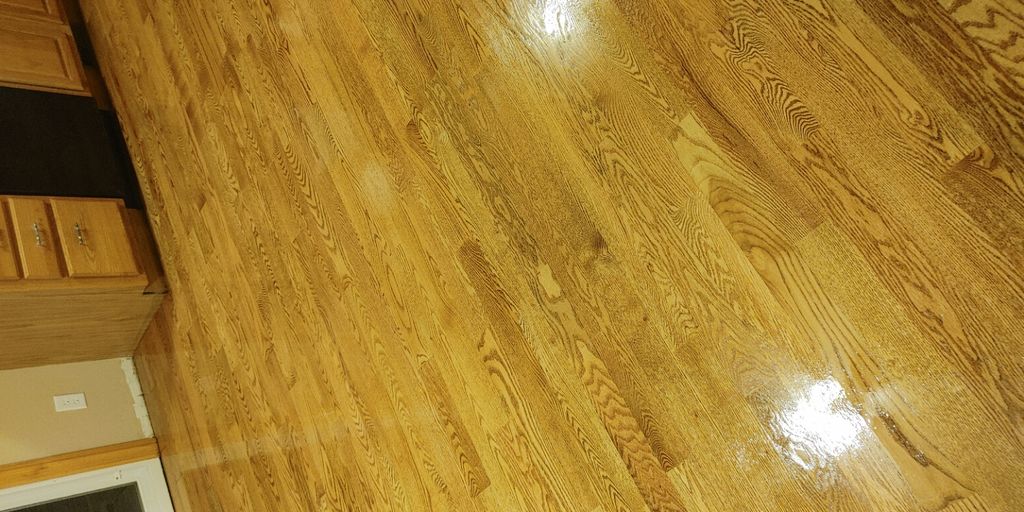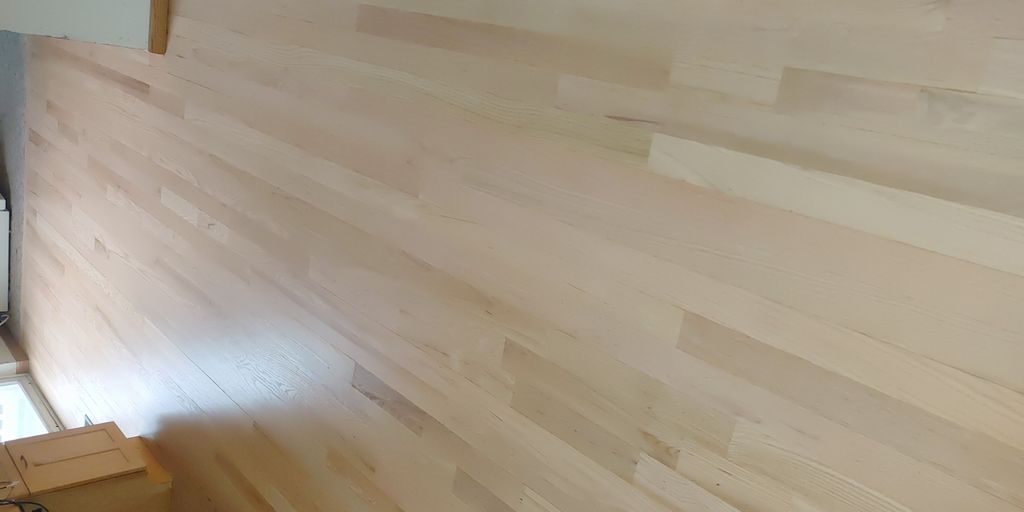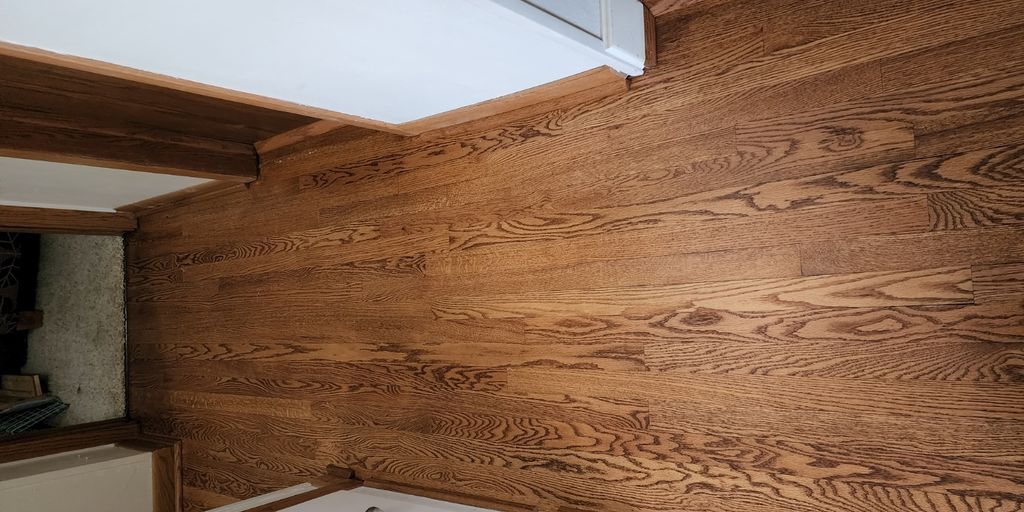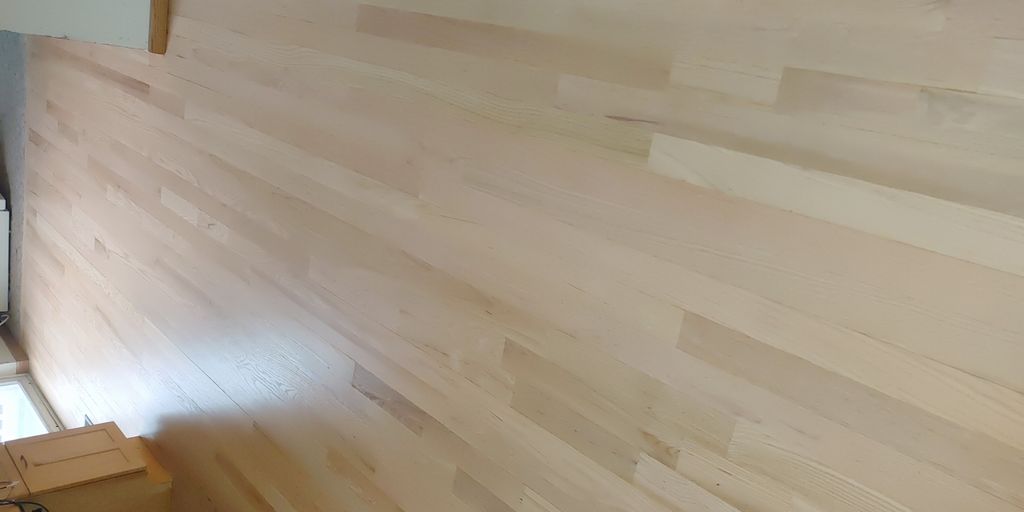Choosing the right finish for your hardwood floors is essential for both aesthetics and durability. With many options available, it’s important to understand their differences to make the best choice for your home. This guide will help you navigate the various finishes and find the one that suits your needs and lifestyle.
Thank you for reading this post, don't forget to subscribe!Key Takeaways
- Different finishes have unique benefits; choose one that fits your lifestyle.
- Water-based finishes dry quickly and are eco-friendly, making them a popular choice.
- Oil-based finishes provide a warm look and are durable for high-traffic areas.
- Hardwax oil finishes enhance the wood grain and are easy to maintain.
- Consider your home’s style and the amount of traffic when selecting a finish.
Understanding Different Types of Hardwood Floor Finishes

When it comes to hardwood floors, the finish you choose is crucial. It not only affects the look but also the durability and maintenance of your floors. Here’s a breakdown of the most common types of hardwood floor finishes:
Water-Based Finishes
Water-based finishes are popular for their quick drying time and low odor. They provide a clear, protective layer that enhances the wood’s natural beauty without altering its color significantly. This type of finish is ideal for light-colored woods and is less likely to yellow over time.
Oil-Based Finishes
Oil-based finishes offer a rich, warm appearance that deepens the wood’s color. They are known for their durability, making them suitable for high-traffic areas. However, they take longer to dry and have a stronger odor during application. Consider this option if you want a classic look that stands the test of time.
Hardwax Oil Finishes
Hardwax oil finishes combine the benefits of oil and wax, providing a natural look while protecting the wood. They enhance the wood grain and are easy to maintain. This finish is best for low-traffic areas where a more natural appearance is desired. It’s a great choice for those who prefer a more eco-friendly option.
| Finish Type | Drying Time | Durability | Ideal For |
|---|---|---|---|
| Water-Based | Fast | Moderate | Light-colored woods |
| Oil-Based | Slow | High | High-traffic areas |
| Hardwax Oil | Moderate | Moderate | Low-traffic areas |
Choosing the right finish can transform your hardwood floors, making them not only beautiful but also long-lasting. [[This comprehensive guide on hardwood floor finishes explores various options to enhance the beauty and durability of your floors.](https://www.wagnermeters.com/moisture-meters/wood-info/types-wood-floor-finishes/?srsltid=AfmBOoqvjYoVq2-vWHBDFHgHc5IWGchoXC-S50wtrRIa1usFzfnATMOT)](https://localflooringrefinishers.com/hardwood-floor-finish/)
Choosing the Right Finish for Your Lifestyle
When it comes to selecting the perfect hardwood floor finish, your lifestyle plays a crucial role. Different finishes cater to various needs, especially in homes with pets, children, or high foot traffic. Here’s how to choose wisely:
Considerations for Homes with Pets
- Durability is key: Look for finishes that resist scratches and stains.
- Easy maintenance: Choose options that are simple to clean and maintain.
- Low odor: Water-based finishes are often better for indoor air quality.
Finishes for High-Traffic Areas
- Polyurethane finishes: These are known for their strength and longevity, making them ideal for busy households.
- Hardwax oil: Offers a natural look while providing decent protection against wear.
- Regular upkeep: Ensure you have a maintenance routine to keep your floors looking great.
Eco-Friendly Options
- Water-based finishes: These typically have lower VOC emissions, making them safer for your home.
- Natural oils: Hardwax oils are a sustainable choice that enhances the wood’s natural beauty.
- Consult professionals: For tailored advice on eco-friendly finishes that suit your home’s needs.
Remember, the right finish not only enhances the beauty of your hardwood floors but also ensures they withstand the test of time. Take your lifestyle into account to make the best choice for your home.
By understanding your specific needs and preferences, you can select a finish that complements your lifestyle while keeping your hardwood floors beautiful and durable.
The Benefits of Water-Based Polyurethane
Water-based polyurethane is a popular choice for homeowners looking to finish their hardwood floors. It offers numerous advantages that make it a top contender for any flooring project.
Quick Drying Time
One of the standout features of water-based polyurethane is its quick drying time. Unlike oil-based finishes, which can take hours to dry, water-based options typically dry in just 2-4 hours. This means you can get back to enjoying your space sooner.
Low VOC Emissions
Water-based polyurethane is also known for its low VOC emissions, making it a more environmentally friendly choice. This is especially important for families with children or pets, as it helps maintain better indoor air quality during and after application.
Ideal for Light-Colored Woods
Another benefit is that water-based finishes maintain the natural color of the wood without yellowing over time. This makes them ideal for light-colored woods, ensuring that the beauty of your flooring shines through.
| Feature | Water-Based Polyurethane | Oil-Based Polyurethane |
|---|---|---|
| Drying Time | 2-4 hours | 8-12 hours |
| VOC Emissions | Low | High |
| Color Change Over Time | Minimal | Yes |
| Cleanup | Soap and water | Solvents |
Water-based polyurethane is a fantastic option for finishing floors. It’s clear, dries fast, and is better for the environment compared to oil-based versions.
In summary, choosing water-based polyurethane for your hardwood floors not only enhances their beauty but also provides a durable and eco-friendly finish that is easy to maintain.
Exploring Oil-Based Polyurethane Advantages
Rich, Warm Finish
Oil-based polyurethane is known for its rich, warm finish that enhances the natural beauty of hardwood floors. This finish penetrates deeply into the wood, creating a stunning amber hue that deepens over time, making it a popular choice for homeowners looking to add warmth to their spaces.
Durability in High-Traffic Areas
One of the standout features of oil-based polyurethane is its exceptional durability. It forms a tough protective layer that can withstand heavy foot traffic, making it ideal for busy households. Here are some key points:
- Resistant to scratches and dents: This finish helps protect the wood underneath, keeping it looking new for years.
- Long-lasting: Oil-based finishes typically require fewer refinishing jobs over time, saving you time and money.
- Ideal for high-traffic areas: Perfect for living rooms, hallways, and kitchens where wear and tear is common.
Longer Drying Time Considerations
While oil-based polyurethane offers many benefits, it does come with some considerations:
- Longer drying time: It can take anywhere from 8 to 24 hours to dry, which may require planning for your project.
- Stronger odor: The fumes can be more intense during application, so proper ventilation is essential.
- Requires more time before use: You may need to wait longer before walking on the floor after application.
Choosing oil-based polyurethane can significantly enhance the beauty and durability of your hardwood floors. Just be prepared for the longer drying times and stronger odors during application.
Hardwax Oil: A Natural Choice
Hardwax oil finishes are a popular choice for homeowners looking for a natural and durable option for their hardwood floors. These finishes provide a matte appearance that enhances the wood’s natural beauty while offering excellent protection.
Enhancing Wood Grain
Hardwax oil penetrates the wood, allowing the grain to shine through. This finish not only highlights the wood’s texture but also maintains its original color, making it a great choice for those who appreciate the natural look of hardwood.
Easy Maintenance
One of the key benefits of hardwax oil is its ease of maintenance. Unlike traditional finishes, hardwax oil can be spot-repaired without the need for sanding the entire floor. This means that if a section gets damaged, you can simply reapply the oil to that area, saving time and effort.
Suitable for Low-Traffic Areas
While hardwax oil is durable, it is best suited for low-traffic areas. In high-traffic zones, it may require more frequent touch-ups to maintain its appearance. Here are some considerations:
- Durability: Hardwax oil offers good protection against scratches and scuffs, but it may not be as tough as other finishes in very busy areas.
- Application: Applying hardwax oil is straightforward, making it a great option for DIY enthusiasts.
- Environmental Impact: Many hardwax oils are eco-friendly, containing low levels of VOCs, which is better for indoor air quality.
Hardwax oil finishes are an excellent choice for those who want a natural look with easy maintenance, making them a favorite among homeowners looking to enhance their hardwood floors.
Factors to Consider When Selecting a Floor Finish
When it comes to choosing the right floor finish for your hardwood floors, several important factors come into play. Understanding these factors can help you make an informed decision that suits your home and lifestyle.
Room Usage and Conditions
- Traffic Levels: Consider how much foot traffic your floors will endure. High-traffic areas may require more durable finishes like oil-based polyurethane.
- Environmental Factors: Humidity and temperature can affect wood. Choose finishes that can withstand your local climate.
- Room Functionality: Kitchens and bathrooms may need water-resistant finishes, while living rooms might prioritize aesthetics.
Aesthetic Preferences
- Color and Sheen: The finish can alter the wood’s appearance. Decide if you prefer a matte, satin, or glossy look.
- Style Compatibility: Ensure the finish complements your home’s decor. For example, a rustic home might benefit from a natural hardwax oil finish.
- Highlighting Wood Grain: Some finishes enhance the wood grain, making it a focal point in your space.
Budget Considerations
- Initial Costs: Higher-quality finishes may cost more upfront but can save money in the long run due to durability.
- Maintenance Costs: Some finishes require more upkeep, which can add to your overall expenses.
- Professional Help: Hiring a local flooring professional can ensure proper application, which may be worth the investment.
Choosing the right finish is crucial for both the beauty and longevity of your hardwood floors. Take your time to evaluate your options and consult with experts if needed.
How to Apply Your Chosen Floor Finish
Applying the right finish to your hardwood floors can make a significant difference in their appearance and durability. Here’s a simple guide to help you through the process.
Preparation and Tools Needed
- Clear the Area: Remove all furniture and rugs from the room.
- Clean the Floor: Sweep or vacuum to eliminate dust and debris. For a deeper clean, use a specialized cleaner.
- Gather Tools: You will need:
- Polyurethane (water-based or oil-based)
- Applicators (brushes or rollers)
- Sandpaper (various grits)
- Clean cloths
Step-by-Step Application Guide
- Sand the Floor: Start with coarse sandpaper to remove the old finish, then switch to finer grits for a smooth surface.
- Clean Again: After sanding, vacuum the floor to remove dust.
- Apply the Finish: Use a brush or roller to apply a thin, even coat of polyurethane. Multiple thin coats are better than one thick coat to avoid drips and bubbles.
- Drying Time: Allow the finish to dry according to the manufacturer’s instructions before applying additional coats.
- Lightly Sand Between Coats: This helps the next layer adhere better and creates a smoother finish.
Common Mistakes to Avoid
- Skipping Preparation: Proper cleaning and sanding are crucial for a good finish.
- Using Thick Coats: Always apply thin layers to prevent issues.
- Ignoring Drying Times: Follow the recommended drying times to ensure a durable finish.
Proper preparation and application are key to achieving a beautiful and long-lasting finish on your hardwood floors. Taking the time to do it right will pay off in the long run!
Maintaining Your Hardwood Floor Finish
Keeping your hardwood floors in top shape requires regular care and attention. Here are some essential tips to help you maintain your floor finish effectively:
Regular Cleaning Tips
- Sweep or vacuum regularly to remove dirt and debris that can scratch the surface. This is crucial for preserving the finish.
- Use a damp mop with a cleaner specifically designed for hardwood floors. Avoid excessive water, as it can damage the wood.
- For deeper cleaning, consider using a misting hardwood cleaner recommended by the manufacturer.
Preventing Scratches and Dents
- Place mats at entryways to catch dirt and moisture, reducing wear on your floors.
- Use felt pads under furniture legs to prevent scratches when moving items.
- Keep pet nails trimmed and clean to avoid scratches from their paws.
When to Refinish Your Floors
- Over time, your hardwood floors may lose their shine. If you notice significant wear or scratches, it might be time for refinishing.
- Generally, refinishing is recommended every 7-10 years, depending on traffic and usage.
- For best results, consider hiring Local Hardwood Flooring Services to ensure a professional finish.
Proper maintenance and care can significantly extend the life of your hardwood floors, keeping them looking beautiful for years to come.
By following these simple steps, you can protect your investment and enjoy the beauty of your hardwood floors for many years. Don’t hesitate to reach out to Local Flooring Refinishers for expert advice and assistance with your floor refinishing services.
Comparing Popular Hardwood Floor Finishes

When it comes to selecting the right finish for your hardwood floors, understanding the options available is essential. Each finish has its unique characteristics, benefits, and drawbacks. Here’s a closer look at some of the most popular hardwood floor finishes:
Aluminum Oxide Finishes
- Durability: Aluminum oxide finishes are known for their exceptional durability, making them ideal for high-traffic areas.
- Longevity: They can last up to 25 years with minimal maintenance, ensuring your floors remain beautiful for years.
- Appearance: This finish does not alter the wood’s natural color, allowing the grain to shine through.
Acid-Cured Finishes
- Strength: Acid-cured finishes, also known as Swedish finishes, offer excellent durability and resistance to wear.
- Application: They require professional application due to their complex curing process and strong fumes.
- Ideal Use: Best suited for commercial spaces or homes with heavy foot traffic.
Water-Based Polyurethane
- Quick Drying: Water-based polyurethane dries quickly, allowing for faster project completion.
- Low VOCs: This option has low volatile organic compounds (VOCs), making it a safer choice for indoor air quality.
- Color Retention: It remains clear and does not yellow over time, making it perfect for light-colored woods.
Oil-Based Polyurethane
- Rich Finish: Oil-based polyurethane provides a warm, amber hue that enhances the wood’s natural beauty.
- Durability: Known for its toughness, it is ideal for high-traffic areas but has a longer drying time.
- Maintenance: Requires more frequent maintenance compared to water-based options.
Moisture-Cured Urethane
- High Resistance: This finish is highly durable and resistant to scratches, making it suitable for homes with pets.
- Application: It has a high VOC level, so proper ventilation is necessary during application.
- Longevity: Offers a long-lasting protective layer for your hardwood floors.
| Finish Type | Durability | Drying Time | VOC Levels | Ideal For |
|---|---|---|---|---|
| Aluminum Oxide | High | Moderate | Low | High-traffic areas |
| Acid-Cured | Very High | Long | High | Commercial spaces |
| Water-Based Polyurethane | Moderate | Short | Low | Residential use |
| Oil-Based Polyurethane | High | Long | Moderate | High-traffic areas |
| Moisture-Cured Urethane | Very High | Moderate | High | Homes with pets |
Choosing the right finish for your hardwood floors is crucial for both aesthetics and durability. Each type offers distinct advantages, so consider your specific needs and lifestyle when making a decision.
Understanding Sheen Levels in Floor Finishes
Choosing the right sheen level is essential for achieving the desired look and durability of your hardwood floors. The sheen level refers to the amount of light reflected by the finish, ranging from high-gloss to matte. High-gloss finishes offer a shiny, reflective surface that highlights the wood’s natural beauty but can show scratches and imperfections more easily. Semi-gloss and satin finishes provide a balance between shine and practicality, making them popular choices for most homeowners. Matte finishes offer a more subdued look, ideal for hiding imperfections and providing a more natural appearance.
Matte vs. Glossy Finishes
- Matte Finishes: These finishes have a low sheen, making them great for hiding scratches and imperfections. They provide a more natural look and are often preferred for rustic styles.
- Satin Finishes: Offering a soft sheen, satin finishes are popular for their ability to conceal dirt and scratches well. They strike a balance between durability and aesthetics.
- Semi-Gloss and Gloss Finishes: These options reflect more light and enhance the wood’s color but may show imperfections more easily. A semi-gloss hardwood is generally twice as bright or reflective as a satin, making it shinier than satin.
Impact on Aesthetics and Durability
| Sheen Level | Reflection | Durability | Maintenance Needs |
|---|---|---|---|
| Matte | Low | Moderate | Low |
| Satin | Medium | High | Moderate |
| Semi-Gloss | High | Very High | High |
| Gloss | Very High | Very High | Very High |
Selecting the right sheen level is crucial for achieving the desired look and durability of your hardwood floors. Consider your home’s style and the level of maintenance you’re willing to commit to when making your choice.
Understanding these sheen levels will help you make an informed decision that aligns with your aesthetic preferences and practical needs.
The Role of Stains in Enhancing Hardwood Floors

Stains play a crucial role in [[[highlighting the natural grain](https://procoatinc.com/blogs/news/choosing-the-perfect-hardwood-floor-stain-a-comprehensive-guide?srsltid=AfmBOooKcTCsd8mPWQHWaWytJThcbgpS38HCXBVKraGKzC1AVMxZh3-z)](https://procoatinc.com/blogs/news/choosing-the-perfect-hardwood-floor-stain-a-comprehensive-guide?srsltid=AfmBOoqEv0E9e2MGS7NiuPosaHIbn4z9MBXJMe-40O_xcjjFPgCsdnAa)](https://procoatinc.com/blogs/news/choosing-the-perfect-hardwood-floor-stain-a-comprehensive-guide?srsltid=AfmBOorFKBijBa5X35IgjXGTUKUOhhHJJ9LUj-uZ1DX3h1g8kg9b7dbF) and texture of the wood. They can bring out the unique patterns and character of different wood species, making your floors a focal point in your home. A well-chosen stain not only enhances the aesthetic appeal but also adds a layer of protection against wear and tear.
Types of Hardwood Floor Stains
There are several types of hardwood floor stains to choose from, each with its own set of benefits:
- Oil-Based Stains: Known for their durability and rich color. They penetrate deeply into the wood, providing a long-lasting finish.
- Water-Based Stains: Eco-friendly options that dry quickly and have low VOC levels. Ideal for those looking for a safer, more environmentally friendly option.
- Gel Stains: Thicker and provide a more uniform color. Great for vertical surfaces and can be easier to apply without drips.
- Combination Stains: These products combine the benefits of oil and water-based stains, offering both durability and quick drying times.
Choosing the Right Stain for Your Wood Type
Different wood species react differently to stains. Here are some common types of wood and how they interact with stains:
- Oak: Absorbs stain evenly, making it a popular choice for both light and dark stains.
- Maple: Has a smooth, subtle grain and does not absorb stain as readily, often resulting in a lighter, more natural look.
- Cherry: Naturally rich and reddish, cherry wood darkens over time, so a lighter stain might be ideal to allow its natural beauty to shine through.
- Pine: Can absorb stain unevenly, so a pre-stain conditioner is often recommended.
Considering Color Choices
When selecting a stain color, think about the overall aesthetic you want to achieve. Light stains can make a room feel more open and airy, while dark stains add depth and sophistication. It’s essential to consider how the stain color will complement your existing decor and furniture.
By understanding how lighting affects stain colors, you can select a finish that enhances the beauty of your hardwood floors, ensuring they look stunning in any light.
Stains play a crucial role in making hardwood floors look even better. They not only add color but also highlight the natural beauty of the wood. If you’re thinking about enhancing your floors, visit our website to learn more about our services and get a special discount!
Final Thoughts on Choosing the Best Floor Finish for Your Hardwood Floors
In conclusion, selecting the right finish for your hardwood floors is a key decision that can greatly affect both the look and longevity of your flooring. With various options available, such as water-based, oil-based, and hardwax finishes, it’s important to consider your lifestyle, the room’s usage, and your personal style. Each finish has its own benefits and drawbacks, so take the time to research and test samples before making a choice. Remember, the right finish not only enhances the beauty of your home but also protects your investment for years to come. Don’t hesitate to consult with flooring professionals to find the best solution tailored to your needs.
Frequently Asked Questions
What are the main types of finishes for hardwood floors?
The main types of finishes for hardwood floors include water-based, oil-based, and hardwax oil finishes. Each type has its own benefits and is suited for different needs.
How do I choose the right finish for my home?
To choose the right finish, consider your lifestyle, the amount of foot traffic, whether you have pets, and your personal style preferences.
What is the difference between water-based and oil-based finishes?
Water-based finishes dry faster and have lower odors, while oil-based finishes offer a richer color but take longer to dry and have a stronger smell.
How often should I refinish my hardwood floors?
Typically, hardwood floors should be refinished every 5 to 10 years, depending on wear and tear. Regular maintenance can extend this time.
Can I apply a new finish over an old one?
Yes, but it’s important to properly prepare the surface by cleaning and lightly sanding it to ensure good adhesion.
What is the best finish for homes with pets?
For homes with pets, a durable finish like polyurethane is recommended, as it provides excellent protection against scratches and stains.
How can I maintain my hardwood floor finish?
Regular cleaning with a soft broom or vacuum, using mats at entryways, and avoiding excess water will help maintain your hardwood floor finish.
Is it safe to use water-based finishes in homes with children?
Yes, water-based finishes are generally safe for homes with children as they have lower VOC emissions and less odor compared to oil-based finishes.



